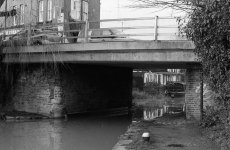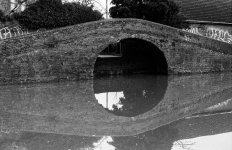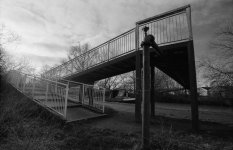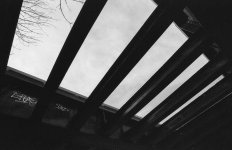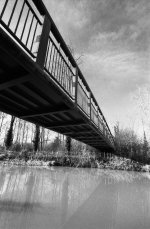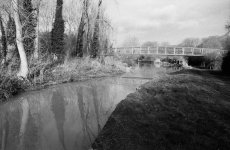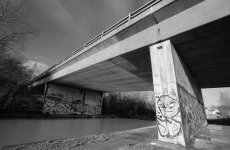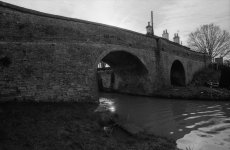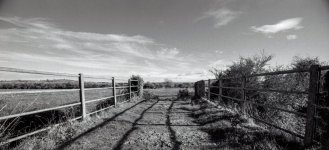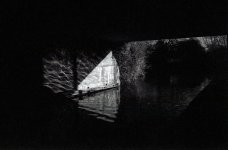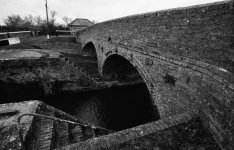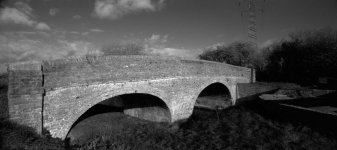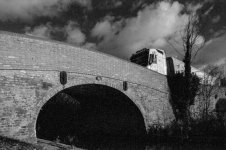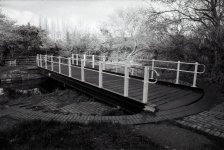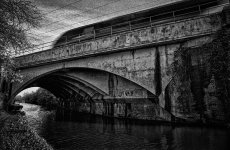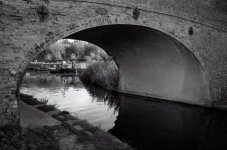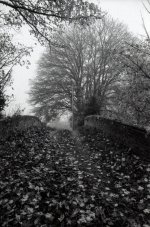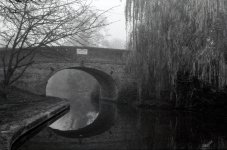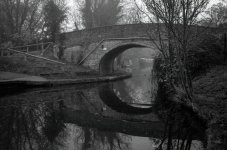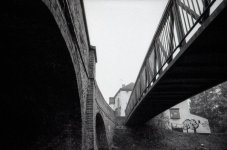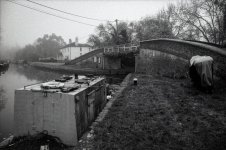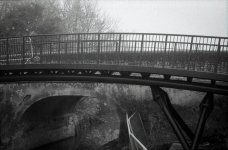With all due respect to @Ed Sutton whose idea I have stolen. I have set myself a personal project to photograph all the bridges on my section of the Grand Union Canal.
I live in Leighton Buzzard, with my nearest bridge being number 115. The section I have arbitrarily selected is from Bridge 90 to Bridge 140 (Milton Keynes to Tring). My plan is to walk each section of the canal and take a photo of each bridge over the canal, and also any obvious bridges to the side as well. Because I am having a bit of a film re-visiting phase in my life, they will all be shot on film. I will also "try" to present the most attractive view I can of each bridge, avoiding record shots where I possible - sometimes, as you will see, this may mean almost entirely avoiding to photograph the bridge itself.
Any of these "rules" are subject to change at my whim.
I do not plan to dump the whole lot on you en-masse, but drip feed them as and when. I do plan to present them in sequence.
It is also relevant to point out that, despite the title, there will not be 50 bridges. Some bridges have disappeared, leaving nothing more than a gap in the numbers. Others have disappeared leaving a shadow on the canal, which if I spot it, I may include. Conversely, most areas have added new bridges which have (generally) required numbers to be added in.
Lockdown will present a problem. All of the Milton Keynes work was down before this latest lockdown. The next section is local and has been easily done within permitted exercise. But further work on the project will have to wait for lockdown to end.
Bridge 90: The start of our journey. A pedestrian bridge near H8 Standing Way, Milton Keynes

Bridge 90A: I found this modern bridge so unattractive, I ended up photographing the concrete flank wall with some nice dappled light

Bridge 90B

Bridge 90C: This image makes me think of some avant garde French cinema. Je ne sais pas pourquoi.

Bridge 91: With a pipe bridge in front and 90C beyond

And finally for today Bridge 92

I live in Leighton Buzzard, with my nearest bridge being number 115. The section I have arbitrarily selected is from Bridge 90 to Bridge 140 (Milton Keynes to Tring). My plan is to walk each section of the canal and take a photo of each bridge over the canal, and also any obvious bridges to the side as well. Because I am having a bit of a film re-visiting phase in my life, they will all be shot on film. I will also "try" to present the most attractive view I can of each bridge, avoiding record shots where I possible - sometimes, as you will see, this may mean almost entirely avoiding to photograph the bridge itself.
Any of these "rules" are subject to change at my whim.
I do not plan to dump the whole lot on you en-masse, but drip feed them as and when. I do plan to present them in sequence.
It is also relevant to point out that, despite the title, there will not be 50 bridges. Some bridges have disappeared, leaving nothing more than a gap in the numbers. Others have disappeared leaving a shadow on the canal, which if I spot it, I may include. Conversely, most areas have added new bridges which have (generally) required numbers to be added in.
Lockdown will present a problem. All of the Milton Keynes work was down before this latest lockdown. The next section is local and has been easily done within permitted exercise. But further work on the project will have to wait for lockdown to end.
Bridge 90: The start of our journey. A pedestrian bridge near H8 Standing Way, Milton Keynes

Bridge 90A: I found this modern bridge so unattractive, I ended up photographing the concrete flank wall with some nice dappled light

Bridge 90B

Bridge 90C: This image makes me think of some avant garde French cinema. Je ne sais pas pourquoi.

Bridge 91: With a pipe bridge in front and 90C beyond

And finally for today Bridge 92
































